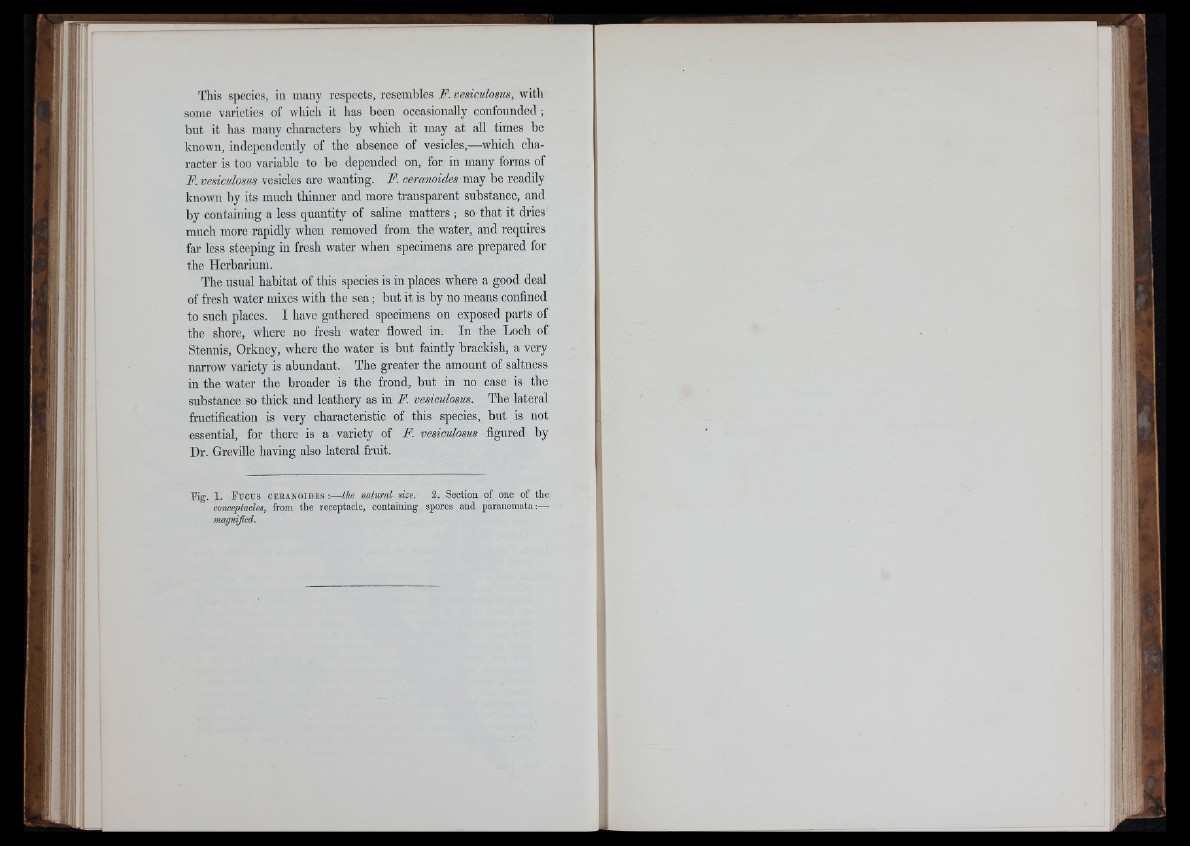
I’his species, in many respects, resembles F. vesiculosus, with
some varieties of which it has been occasionally confounded;
but it has many characters by which it may at all times be
known, independently of the absence of vesicles,—which character
is too variable to he depended on, for in many forms of
F. vesiculosus vesicles are wanting. F. ceranoides may he readily
known hy its much thinner and more transparent substance, and
by containing a less quantity of saline matters ; so that it dries
much more rapidly when removed from the water, and requires
far less steeping in fresh water when specimens are prepared for
the Herbarium.
The usual habitat of this species is in places where a good deal
of fresh water mixes with the sea; but it is by no means confined
to such places. I have gathered specimens on exposed parts of
the shore, where no fresh water flowed in. In the Loch of
Stennis, Orkney, where the water is but faintly brackish, a very
narrow variety is abundant. The greater the amount of saltness
in the water the broader is the frond, hut in no case is the
substance so thick and leathery as in F. vesiculosus. The lateral
fructification is very characteristic of this species, but is not
essential, for there is a variety of F. vesiculosus figured by
Dr. Greville having also lateral fruit.
Fig. 1. F n c c s ceranoides :— the natural size. 3. Section of one of the
conceptacles, from the receptacle, containing spores and paranemata;—
magnifiei.
V a I
LI